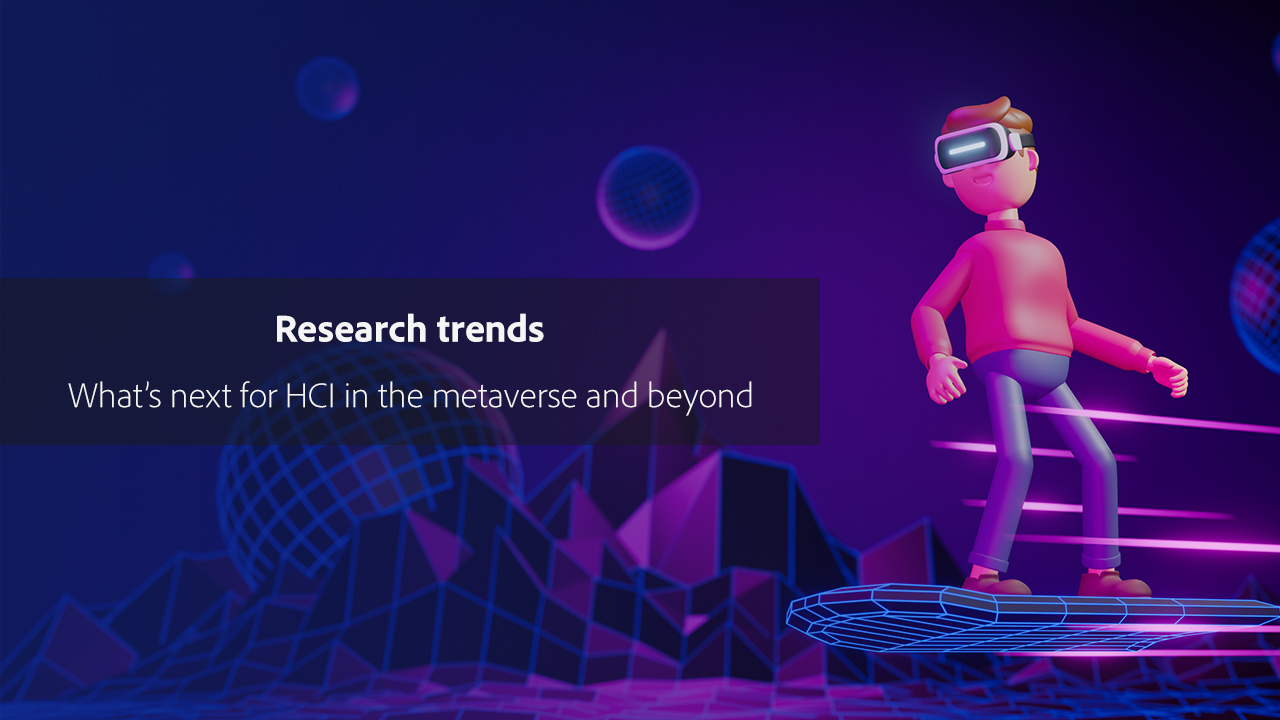
Wondering which trends and ideas will shape technology in 2022 and beyond? We talked to a few members of the Adobe Research team to find out.
Cuong Nguyen, Research Scientist, studies human-computer interaction, virtual reality (VR), augmented reality (AR), and the future of content creation and collaboration technologies. He shared his ideas about how we’ll use technology to interact with the world in the future.
What trend are you excited about in human-computer interaction and AR and VR in 2022?
Right now, I’m really interested in wearable consumer head-mounted displays (HMDs) as the driving force behind the metaverse. I personally believe these devices will be capable of replacing smartphones as the next mobile computing platform.
An HMD is essentially a sensing powerhouse. It’s equipped with sensors and algorithms that can sense and reason about the world around the user and what the user is doing. This information could then be used to drive 3D experiences that are then rendered directly on the head-mounted displays. We can essentially bridge the gap between the digital and the physical worlds.
With more advanced sensing in HMDs, we could give users enhanced capabilities. Imagine wearing an HMD that could let you see through walls or detect hidden heat or water sources. And, in addition to sensing the environment, wearable sensors could sense the users as well. Information like heart rate, stress level, and electrical activity (EMG) could be used to build AR and VR experiences that adapt to the user’s needs.
Are there other things you think researchers should consider as they develop tools for the metaverse?
I think we need to pay attention to safety and trust. If it’s a platform for us to communicate, what do we have to do to make it a safe space? With body tracking and immersive graphics, cyberbullying in the metaverse could potentially have more adverse consequences than in traditional chat rooms and web bulletins. I hope to see more work in this space.

You’re also interested in the future of work. What do you see happening there?
With COVID-19, we’ve seen people move from urban metropolitan areas to suburbs. Some companies have stopped renting office space, and some people are working four days a week instead of five, and so on. I’m really excited about how fast new technologies are being developed to accommodate these shifts in human behavior.
It makes a lot of sense because different professions require different tools to work well remotely. It’s hard to imagine teachers, corporate strategists, and construction workers using the same digital tools to carry out their work. So researchers are starting to study these new work behaviors and use their findings to inform the development of new technologies to enable better remote work.
What else do you hope researchers will focus on in 2022 and beyond?
I’m also hoping to see work that makes AI technologies more accessible. Powerful deep learning models can accomplish things with scale and complexity that no human can achieve. But using and interacting with these models is still very difficult, even for programmers. So I’d love to see more technologies that can make it easier to work with AI.
Some good examples of recent work in the field include a visualization tool to help programmers explore model design choices, and a prototyping workflow where designers can work with a model, see its output in real time, and use the output to inform design choices.
Wondering about Adobe’s research on human-computer interaction? You can read more here.